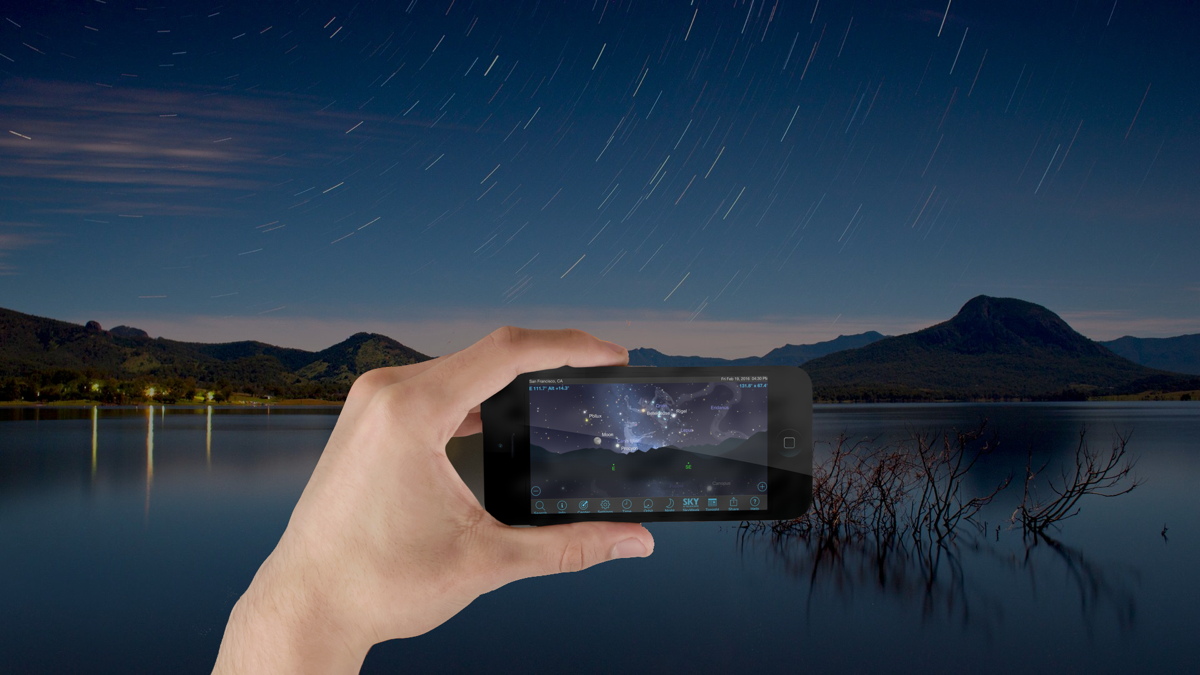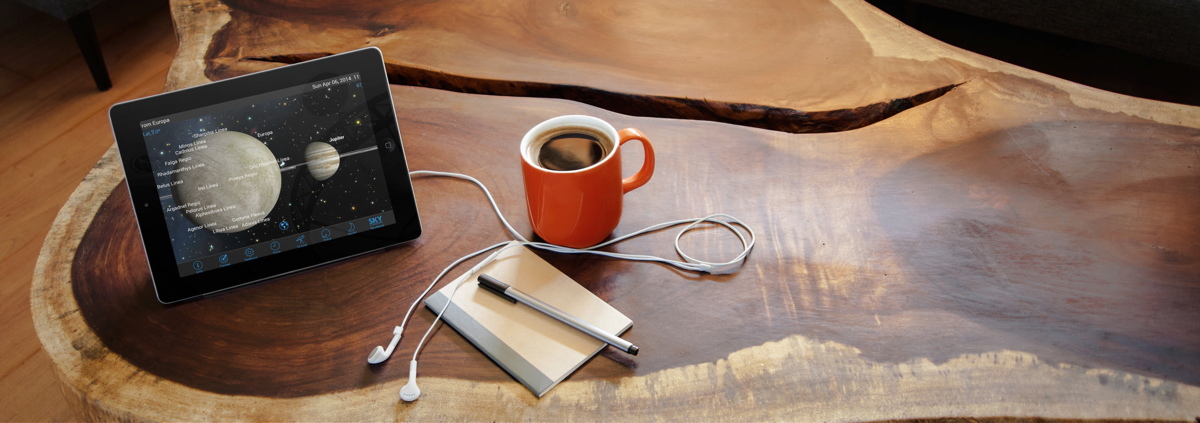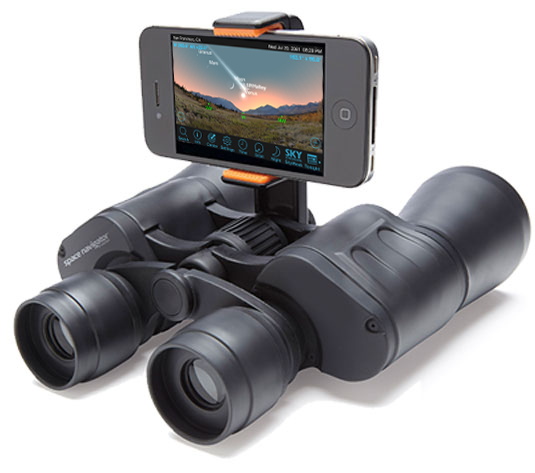Mobile Stargazing: The Universe at Your Fingertips

Being out under the stars on a clear night can be "food for the soul," and it's been known to trigger a lifelong passion for astronomy in more than one impressionable youngster - myself included! But it can also leave you wondering what you're looking at. Is that bright object a star, or a planet, or even a satellite? Where does one constellation end, and the next one begin? And where can I find that comet that everyone’s been talking about? Is it even visible from where I live?
It's not always convenient to consult an astronomy book, or magazine star chart, in the dark, and not everyone has access to these aids. But nearly everyone has a mobile device these days, and there are plenty of apps available for sky watchers of all ages and knowledge levels. In this series of columns, we'll explore astronomy the 21st century way – with astronomy and space-related apps and gadgets.
Here, we'll explain how to navigate the sky and learn some prominent stars and constellations. We'll learn why different stars are visible at different times of the year. We'll cover how the planets move along the ecliptic (the plane of the solar system), and where to find it. We'll study the moon's motion across the sky, and why it occasionally eclipses a star – or the sun! We'll start off by helping you configure the app so you're ready for the next clear night. [Smart Space Apps to Explore the Universe]
For telescope owners, astronomy apps can offer advice on what to observe, and what’s likely to be visible with your equipment, large or small. Many naked eye stars are actually double or multiple systems, often comprised of stars of different colors - and these can be enjoyed in a backyard telescope. Most of these multiple stars were named before the invention of the telescope, so they only bear a single name. Other stars vary in brightness on a repeating schedule that you can track yourself by observing how they vary compared to their neighbors in the eyepiece field of view. Advanced astronomy apps provide background information of the story behind the names, and the interesting science around the stars’ behavior.
If you're a planet enthusiast, an astronomy app can tell you where the four Galilean moons of Jupiter are, and whether they are eclipsing one another, or casting their little round black shadows on the great planet's face. Jupiter rotates once every 10 hours or so, so your app is a great aid to determine when to look for the Great Red Spot. We'll explain how to configure and use the app to do all of these tasks.
Deep sky objects, nebulas, star clusters, and galaxies populate the night sky year round. While most galaxies are beyond the reach of backyard telescopes, several are easy to see with unaided eyes, if you know where to look. The Great Andromeda Galaxy, also known as Messier 31, is six full moon diameters across, and the light you're seeing now left there 2.5 million years ago! Messier 31 is one of a list of 110 famous deep sky objects first listed by French astronomer Charles Messier in 1771, many of which can be spotted without a telescope. We'll cover how to generate lists of these objects for your location and observing date, and use your app to find them.
Not all apps are created equal. While we won't play favorites, we will identify the simple ones for beginners, and highlight the ones with advanced features that budding astronomers and even teachers can use, indoors or out, to fully learn the science. When new apps are released or old favorites updated, we'll review them and highlight what's new.
Breaking space news, the latest updates on rocket launches, skywatching events and more!
From time to time, we'll explain the purpose for many of the features, like the red screen mode for night vision, the meridian and ecliptic reference lines, and the various coordinate grids that can be switched on. Some of the apps allow you to explore the universe by flying from place to place and seeing the sky from another star. Or view our solar system as seen from another planet.
Some of the apps even allow you to connect to a computerized telescope and drive it around the sky. We'll cover that, too.
This Mobile Stargazing column will go beyond stargazing. We'll look at the apps for various space telescope and planetary exploration missions, including apps that tell you how to see the International Space Station, or watch spacewalks on your phone. There are even apps to alert you when to head outside and look for auroras, also known as northern lights. We'll also see how stargazers use mobile devices as astronomy aids, from taking smartphone astrophotographs, to leveling your telescope tripod, to catching that perfectly composed photograph by predicting where the moon or other objects will be on a given day and time.
In the next column, we'll highlight how mobile devices and apps represent a fundamental shift, allowing us to make a connection with the sky that we just couldn't before. We'll highlight common features found on most astronomy apps and how to set them up for best results. I'm also interested to hear what you want to know about, so please send questions and ideas for topics to cover in future columns. Until then, keep your eyes on the skies!
Editor's note: You can reach Chris Vaughan via email, and follow him on Twitter @astrogeoguy, as well as Facebook and Tumblr.
This article was provided by Simulation Curriculum, the leader in space science curriculum solutions and the makers of the SkySafari app for Android and iOS. Follow SkySafari on Twitter @SkySafariAstro. Follow us @Spacedotcom, Facebook and Google+. Original article on Space.com.

Chris Vaughan, aka @astrogeoguy, is an award-winning astronomer and Earth scientist with Astrogeo.ca, based near Toronto, Canada. He is a member of the Royal Astronomical Society of Canada and hosts their Insider's Guide to the Galaxy webcasts on YouTube. An avid visual astronomer, Chris operates the historic 74˝ telescope at the David Dunlap Observatory. He frequently organizes local star parties and solar astronomy sessions, and regularly delivers presentations about astronomy and Earth and planetary science, to students and the public in his Digital Starlab portable planetarium. His weekly Astronomy Skylights blog at www.AstroGeo.ca is enjoyed by readers worldwide. He is a regular contributor to SkyNews magazine, writes the monthly Night Sky Calendar for Space.com in cooperation with Simulation Curriculum, the creators of Starry Night and SkySafari, and content for several popular astronomy apps. His book "110 Things to See with a Telescope", was released in 2021.




